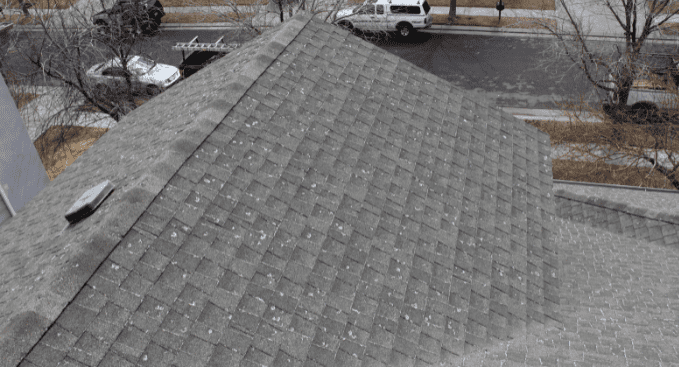Hailstorms can cause a devastating amount of damage to your property. When addressed quickly, most damage won’t cause long-term damage to your roof or building. However, if you neglect to take care of the hail damage to your roof, what was once a minor crack and a few missing granules can turn into a slew of other problems, ranging from roof leaks to structural damage. To avoid long-term damage to your property, have your roof inspected and repaired at the earliest convenience once the hailstorm has ended.
The costs associated with hail damage can quickly add up because hail doesn’t just affect your roof. It can also affect your windows, siding, and related exterior elements. Some signs of hail damage are apparent, but the minor unnoticeable damage is hard to spot to the untrained eye. Even if you don’t have noticeable signs of wear on your roof due to hail damage, you’ll still need a hail damage inspection to find out how much damage you’re dealing with and how to proceed with any roof repairs needed. In this blog, we’ll be discussing how even the tiniest amount of hail damage can lead to long-term issues for your room and property and how to repair the problem so you won’t have to deal with the aftereffects.
Long Term Effects of Roof Hail Damage
During a hailstorm, your roof gets beaten with thousands of hailstones. These stones can range from as small as a dime to as large as a baseball. Depending on the type of roof you have, hail damage will look different. If you have asphalt shingles, you’ll expect to see a lot of exposed asphalt, lost granules, and damaged fiberglass mats after the storm. This type of damage may not seem immediately concerning, but it does impact the overall longevity of your roof and can lead to leaking and further damage when left unaddressed. Additionally, the hailstorm compromises the integrity of the roofing materials, leaving them more vulnerable to the elements. In comparison, a roof in excellent condition will hold up to inclement weather far better than a damaged roof.
Hailstones can cause cracks in insulation and supporting substrate, essential roofing material for commercial and industrial properties. These cracks can compromise the fireproofing of the system as well as unwanted moisture pooling leading to long-term leaks and lowered R-value of the insulation. Although metal roofs are sturdy, dimples can still be caused by hailstones in the material. It isn’t likely to lead to water and other debris accumulation, but can compromise the aesthetic appeal and even compromise the paint. Here are the long-term effects of roof hail damage.
Leaking
It’s no shock that cracks and holes in your roof will lead to leaks. Leaks are a significant hazard and can damage the structure of your facility, including the foundation creating a favorable environment for mold growth. They can even start fires if water comes into contact with exposed wiring in the attic. The next time a rainstorm or thunderstorm rolls around, rainwater will seep through these openings and creep into your facility.
Fungi Growth
Rainwater can accumulate in dents and cracks in your roof, providing the moisture necessary for fungi to thrive. The combination of water, fresh outside air, and dirt and debris on the roof creates the perfect environment for moss, algae, and mold growth. Fungi that grow on your roof can cause rotting and decomposition in materials such as wood. It can even grow underneath shingles and other roofing materials, which can dislodge them and lead to cracking, holes, and eventually, leaks. This leaking can result in mold infiltrating your home. It usually starts in the attic and spreads slowly throughout the rest of the interior, leaving a trail of damage and making you and your family sick.
Decreased Curb Appeal
A visibly damaged roof can negatively impact your home’s curb appeal and market value. This is a huge problem, especially if you see yourself selling your home in the future. If you live in an HOA, you can even receive fines or have a lien filed against your property if you don’t fix the damage. Roof damage is partially cosmetic and can detract from the neighborhood’s overall appeal if it’s severe.
To Call a Professional or Not to Call
There are several reasons why you should never DIY roof repair. It can be dangerous to walk on top of your roof, and you face the risk of slipping and falling. A professional roofing contractor can detect damage that the ordinary eye would gloss over. Not all roof damage is immediately apparent. Broken fiberglass mats, for example, are a common problem that most DIYers overlook. The best course of action after a hail storm involves three simple steps:
- Document the damage
- File a claim with your insurance company as soon as possible
- Get quotes from several roof repair companies and choose one to repair the damage
When you address dents, cracks, and other forms of damage right away, you lower the chances of having long-term problems. But, when the damage is left alone, it can spiral out of control. As soon as a hailstorm occurs, schedule an inspection with Denver Commercial Property Services.



